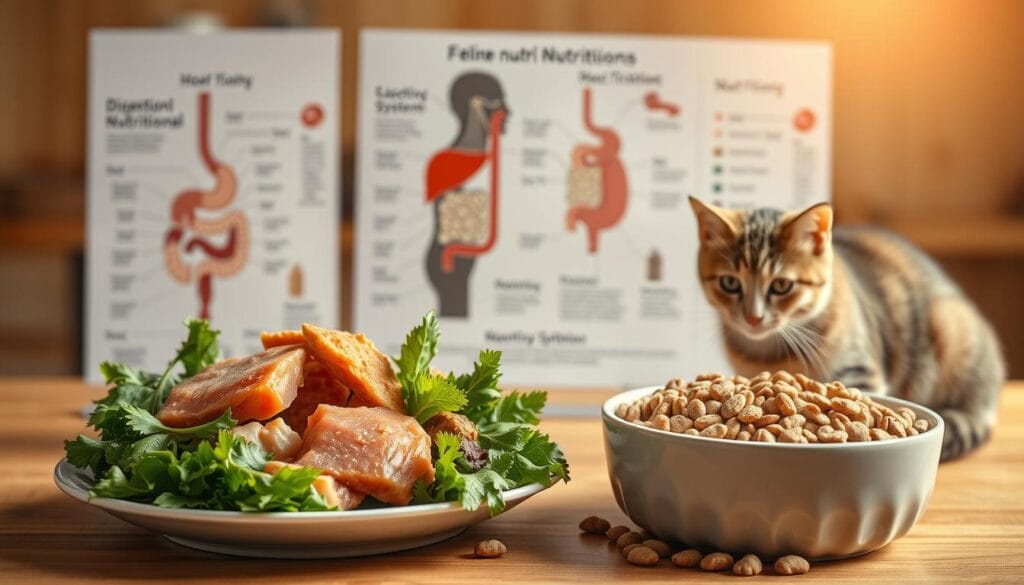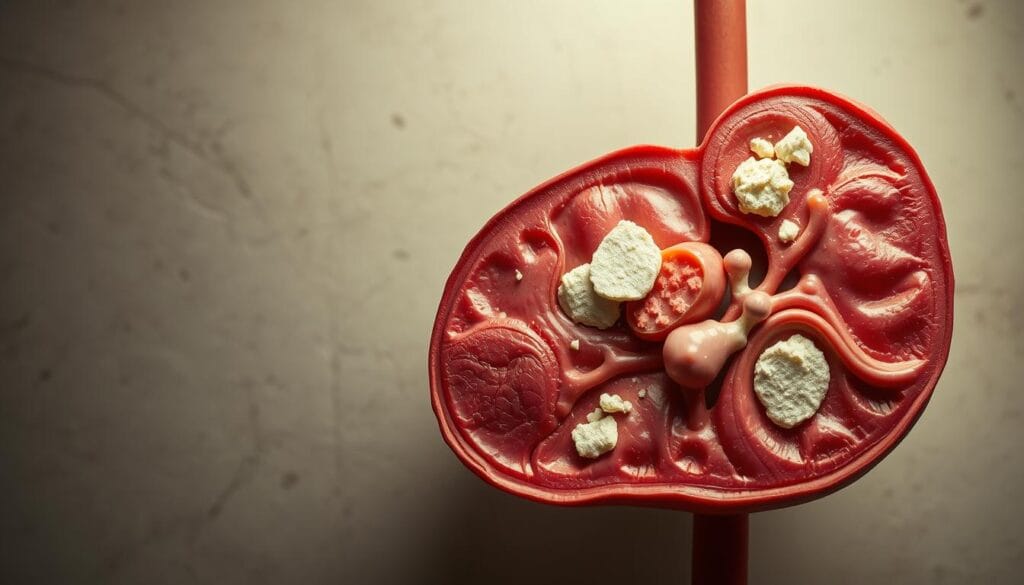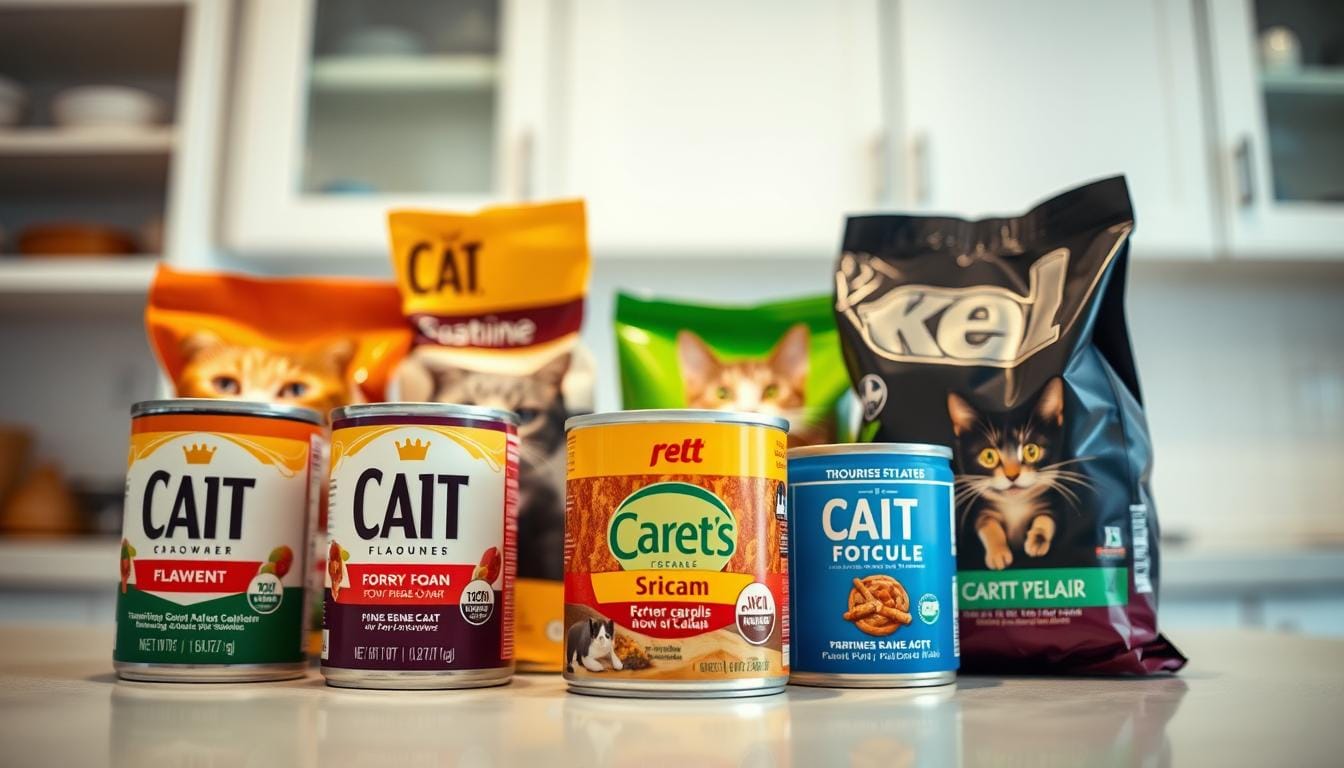Can humans eat cat food? What are the health risks?
Have you ever found yourself staring at a bowl of cat food while feeding your cat, wondering if humans can eat cat food and what would happen if it took a bite? Curiosity about unconventional snacks is not uncommon, especially when life is stressful or budget-conscious. But before you consider this fleeting thought, there’s more to it than just taste.
Products designed for pets often spark questions about their suitability for people. While they might seem harmless at first glance, formulas tailored for animals prioritize species-specific needs. For example, cats require high protein and taurine levels, but their meals lack fiber and other essentials humans need daily.
Table of Contents
Short-term exposure to small amounts likely won’t cause severe harm. However, relying on these items as a regular part of your diet introduces risks. Elevated minerals like magnesium could strain organs over time, and flavor enhancers meant for pets may upset your stomach.
This discussion isn’t just about avoiding odd cravings—it’s about recognizing how nutritional gaps and hidden dangers impact well-being. Let’s dive deeper into why this topic matters far beyond momentary curiosity.
Understanding Cat Food: Ingredients and Nutritional Facts
What’s really inside those cans and kibble bags? Commercial formulas prioritize feline biology, blending animal-based components to meet strict dietary needs. While labels list familiar items like chicken or fish, their proportions and processing differ vastly from human meals.
Protein Sources and Energy Needs
High-quality recipes use whole meats or meat meals—concentrated protein powders from animal tissues. Organ meats and byproducts add nutrients like taurine, which supports heart health. Fats from fish oil or poultry fat provide concentrated energy, crucial for active pets.
Specialized Supplements and Additives
Manufacturers fortify products with vitamins A and D3, plus minerals like calcium. Synthetic taurine and arachidonic acid address cats’ inability to produce these naturally. Preservatives like BHA extend shelf life but aren’t tested for long-term human safety.
| Nutrient | Cat Food | Human Food |
|---|---|---|
| Protein | 30-40% | 10-35% |
| Fat | 15-20% | 20-35% |
| Taurine | Added synthetic | Natural sources |
| Vitamin A | Preformed animal sources | Plant-based options |
| Additives | BHA/BHT common | Regulated preservatives |
This nutritional blueprint works for whiskered companions but creates imbalances for people. Formulas lack fiber and complex carbs while overdelivering on elements your body processes differently.
Can Humans Eat Cat Food? Breaking Down the Debate
Imagine being stranded without supplies—would those kibble bits become your lifeline? This extreme scenario highlights the core question: when does curiosity cross into necessity?
When Desperation Dictates Decisions
In crisis situations, pet meals might temporarily stave off hunger. Their concentrated protein and fat content provide quick energy. However, this stopgap solution lacks essential fiber and exceeds safe vitamin levels for people.
| Factor | Emergency Use | Regular Intake |
|---|---|---|
| Purpose | Immediate survival | Dietary replacement |
| Nutritional Adequacy | Minimal short-term energy | Severe deficiencies |
| Health Risks | Mild digestive upset | Organ strain, toxicity |
| Recommendation | Last-resort option | Strictly avoid |
Occasional accidental tasting typically causes no lasting harm. Your system might protest with nausea or diarrhea—clear warnings to steer clear. Persistent use invites bigger problems: excess vitamin A damages livers, while unbalanced minerals disrupt kidney function.
Those facing food insecurity deserve real solutions—not risky shortcuts. Food banks and community programs offer safer alternatives than compromising health through repeated pet product consumption.
Nutritional Differences: Human vs. Feline Needs
Your body and your pet’s have wildly different fuel requirements. Feline biology thrives on meat-heavy meals packed with preformed vitamins and amino acids. In contrast, omnivorous systems demand variety—plant fibers, antioxidants, and nutrients that simply don’t exist in kibble formulas.

Key Nutrients Absent in Cat Food for Humans
While whiskered companions get everything from animal tissues, your diet relies on diverse sources. Missing elements like vitamin C—which felines produce naturally—leave gaps when relying on their meals. Dietary fiber, crucial for digestion and blood sugar control, is nearly absent in meat-centric recipes.
| Nutrient | Human Needs | Feline Needs |
|---|---|---|
| Vitamin C | Essential (75-90mg/day) | Self-produced |
| Fiber | 25-30g daily | |
| Carbohydrates | 45-65% of calories | Non-essential |
| Vitamin A | 700-900mcg RAE | Higher tolerance |
| Calcium | 1,000-1,200mg/day | Balanced for bones |
Bioavailability matters too. Nutrients in pet meals are optimized for carnivore digestion, not yours. Plant-based compounds like phytonutrients, which protect against chronic diseases, aren’t prioritized in meat-heavy blends.
Over time, these imbalances strain bodily functions. Excess vitamin A from liver-heavy formulas can accumulate dangerously, while missing antioxidants weaken cellular repair. Species-specific nutrition isn’t a marketing gimmick—it’s survival science.
Digestive System Considerations When Eating Cat Food
Your gut wasn’t built to process fuel designed for predators. Feline biology features a shorter digestive tract—about 12-24 inches—to rapidly break down meat proteins. In contrast, your system stretches over 30 feet, optimized for slowly extracting nutrients from plants and grains.
Enzymes tell part of the story. Cats produce higher levels of protease to digest animal tissues efficiently. Your body relies more on amylase to handle carbohydrates, which barely exist in carnivore-focused meals. This mismatch leaves undigested proteins lingering, potentially irritating intestinal linings.
| Trait | Human System | Feline System |
|---|---|---|
| Tract Length | 30+ feet | 12-24 inches |
| Key Enzymes | Amylase, cellulase | Protease, lipase |
| Fiber Processing | Essential | Minimal |
| Fat Tolerance | Moderate | High |
Preservatives like ethoxyquin or BHT, common in kibble, lack safety approvals for people. These additives might trigger inflammation or disrupt gut bacteria balance. High-fat formulas meant for feline energy needs could overwhelm your pancreas, leading to cramps or diarrhea.
Repeated consumption risks long-term issues. Without fiber to regulate transit time, waste moves too slowly through your colon. This stagnation creates environments where harmful bacteria thrive—far from the quick-exit design of predator digestion.
Short-Term Reactions and Tummy Troubles
Your stomach sends urgent signals after nibbling pet kibble—sharp cramps or sudden nausea aren’t just coincidence. Formulas designed for carnivores contain ingredients that clash with human biology. Let’s explore how these mismatches trigger immediate distress and why repeated exposure worsens outcomes.
Immediate Gastrointestinal Reactions
High-fat recipes and dense animal proteins overwhelm digestive enzymes. Within hours, you might experience vomiting or diarrhea as your system rejects unfamiliar components. Synthetic additives like BHA amplify irritation, while low fiber content slows waste movement.
| Symptom | Primary Cause | Average Onset Time |
|---|---|---|
| Nausea | High fat content | 30-90 minutes |
| Diarrhea | Undigested proteins | 2-4 hours |
| Abdominal Pain | Preservative irritation | 1-3 hours |
| Constipation | Zero dietary fiber | 12-24 hours |
Potential Long-Term Digestive Issues
Weekly exposure alters gut bacteria balance, increasing inflammation risks. Chronic constipation from fiber deficiency may progress to intestinal blockages. Over time, vitamin A overload damages intestinal linings, raising susceptibility to conditions like IBS.
Individual tolerance varies—some recover quickly, while others face lasting damage. Age, pre-existing conditions, and portion sizes all influence outcomes. Persistent consumption transforms temporary discomfort into lifelong health challenges.
Risks of Excessive Protein and Fat Intake
What happens when fuel meant for carnivores enters a human system? While whiskered companions thrive on meat-heavy meals, their dietary staples create metabolic stress for omnivorous biology. Protein levels in commercial formulas often exceed 40%—far above the 10-35% recommended for people.

Your kidneys work overtime processing this surplus. Over weeks or months, excess nitrogen from animal proteins can strain renal function. Studies link prolonged high-protein diets to increased kidney stone risk and reduced filtration efficiency.
Fat profiles pose separate challenges. Recipes prioritize saturated fats from animal sources to meet feline energy needs. Regular consumption may elevate LDL cholesterol, contributing to arterial plaque buildup. Unlike balanced human meals, these formulas lack heart-protective omega-3s found in plant oils and fatty fish.
| Nutrient | Feline Formula | Human Needs |
|---|---|---|
| Protein % | 30-40% | 10-35% |
| Saturated Fat | High | Limit to 10% |
| Omega-3:6 Ratio | 1:10 | 1:4 |
Essential fatty acid imbalances amplify inflammation risks. The skewed omega-6 dominance in pet meals disrupts cellular repair processes. Over time, this imbalance may worsen joint pain or skin conditions while undermining cardiovascular health.
Your body’s nutritional requirements demand precision that carnivore-focused formulas can’t provide. Choosing species-appropriate nourishment remains key to sustaining long-term wellness.
Potential Kidney and Liver Concerns
Your body’s filtration systems weren’t designed to process nutrients optimized for feline biology. Pet formulas contain substances that strain vital organs when consumed regularly. Even small amounts can accumulate over time, creating invisible burdens.
Phosphorus Overload and Mineral Imbalance
Feline diets prioritize phosphorus for bone strength—but human kidneys struggle to eliminate excess. High levels disrupt calcium balance, leading to deposits in soft tissues. Over months, this accelerates kidney dysfunction and weakens bones.
| Substance | Safe Human Limit | Typical Pet Formula |
|---|---|---|
| Phosphorus | 700mg/day | 1,200-1,500mg |
| Vitamin A | 900mcg | 5,000-10,000mcg |
Vitamin A Toxicity Risks
Preformed retinol in animal-based ingredients builds up in liver cells. Symptoms start subtly—headaches or dry skin—but progress to vision changes and joint pain. Chronic exposure may cause irreversible scarring in liver tissue.
Grain contaminants like aflatoxins add further strain. These mold byproducts bypass human safety checks in pet products. Regular intake damages liver cells, increasing failure risks despite no immediate symptoms.
Immune System Challenges and Allergen Exposure
Pet meals undergo different safety checks than items meant for your plate. While manufacturers follow guidelines for animal consumption, these standards permit higher pathogen levels. Bacteria like Salmonella or E. coli often linger in raw materials used for kibble—risks your immune system isn’t prepared to handle regularly.
Contaminant limits tell a concerning story. Pet products allow up to 10 times more aflatoxins—mold byproducts linked to liver damage. Human-grade items face stricter testing, reducing exposure to these invisible threats.
| Pathogen | Pet Food Allowance | Human Food Limit |
|---|---|---|
| Salmonella | Permitted in some states | Zero tolerance |
| E. coli | Up to 100 CFU/g | Non-detectable |
| Aflatoxins | 20ppb | 2ppb |
Allergic reactions add another layer of risk. Common proteins like fish or beef in kibble trigger responses ranging from hives to anaphylaxis. Cross-contamination during production introduces unlisted ingredients, complicating avoidance strategies.
Canned varieties pose separate concerns. BPA-lined containers leach endocrine disruptors into gravy or pâté. These chemicals mimic hormones, potentially altering thyroid function or reproductive health over time.
Repeated exposure weakens your body’s defenses. Pathogens overwhelm white blood cells, while chemical additives suppress immune responses. What begins as temporary discomfort could evolve into chronic vulnerability.
Understanding Metabolic Differences Between Humans and Cats
Metabolism shapes how bodies convert food into fuel—a process that varies wildly between species. Feline systems prioritize rapid energy extraction from animal proteins, while yours requires balanced nutrients from diverse sources. This biological mismatch explains why their meals fail to meet your needs.
Cats evolved to thrive on diets rich in preformed vitamins like A and B12. Your body processes these differently, risking toxicity when consumed regularly. Their metabolic machinery also conserves water efficiently—unlike yours, which relies on steady hydration and plant fibers.
Even small dietary swaps strain organs. Excess taurine from pet formulas stresses kidneys unaccustomed to processing surplus amino acids. Over time, these imbalances disrupt blood sugar regulation and cellular repair mechanisms.
Respecting species-specific biology protects long-term health. While curiosity about unconventional options persists, sustainable nourishment comes from choices aligned with your unique metabolic blueprint. Always prioritize meals designed for your physiology—not feline companions’.
- Can Cats Eat Peas? Easy Snack Ideas
- Why canned cat food can be better for your cat’s health
- Wet Cat Food for Kittens: Top Nutritious Choices 2025

